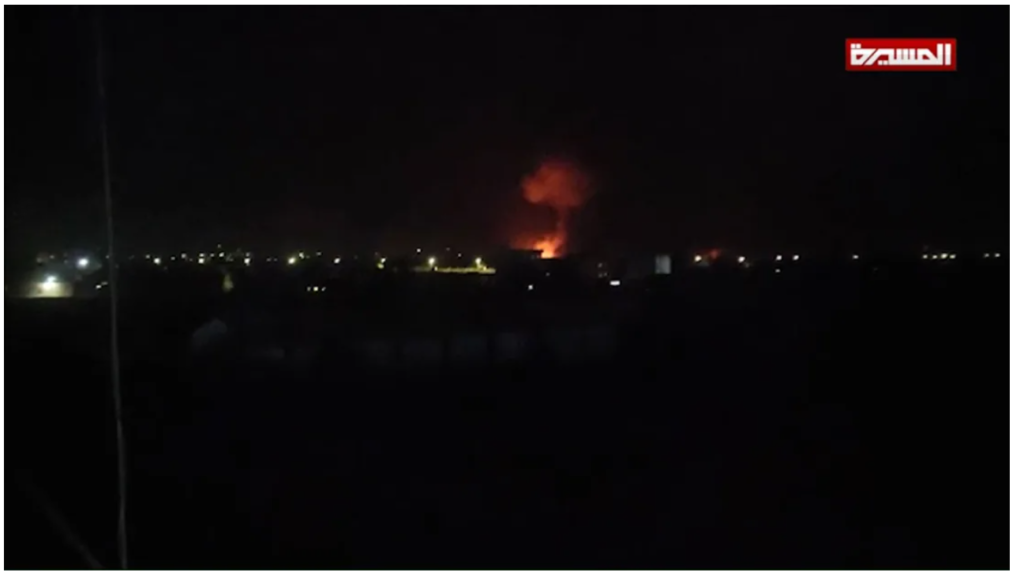The US and UK militaries launched strikes against multiple Houthi targets in Houthi-controlled areas of Yemen on Thursday, marking a significant response after the Biden administration and its allies warned that the Iran-backed militant group would bear the consequences of repeated drone and missile attacks on commercial shipping in the Red Sea.
US President Joe Biden said he ordered the strikes “in direct response to unprecedented Houthi attacks against international maritime vessels in the Red Sea.”

Biden added that he will “not hesitate to direct further measures to protect our people and the free flow of international commerce as necessary.”
U.S. President Joe Biden delivers a speech to mark the third anniversary of the January 6, 2021 attack on the U.S. Capitol at a campaign event at Montgomery County Community College, in Blue Bell, near Valley Forge, Pennsylvania, U.S., January 5, 2024.
“Today, at my direction, U.S. military forces — together with the United Kingdom and with support from Australia, Bahrain, Canada, and the Netherlands—successfully conducted strikes against a number of targets in Yemen used by Houthi rebels to endanger freedom of navigation in one of the world’s most vital waterways,” the president said in a statement released by the White House.
US and coalition forces struck over 60 targets at 16 Iranian-backed Houthi militant locations, US Air Forces Central Commander Lt. Gen. Alex Grynkewich said. The Houthi assets included command and control nodes, munitions, depots, launching systems, production facilities, and air defense radar systems, he added.
The strikes killed five and wounded six others, according to the rebels’ military spokesperson, Yahya Sare’e, who said the airstrikes would not deter further Houthi attacks on shipping.
The strikes are a sign of the growing international alarm over the threat to one of the world’s most critical waterways. For weeks, the US had sought to avoid direct strikes on Yemen because of the risk of escalation in a region already simmering with tension as the Israel-Hamas war continues, but the ongoing Houthi attacks on international shipping compelled the coalition to act.
Though the US has carried out strikes against Iranian proxies in Iraq and Syria since the outbreak of the war in Gaza, this marks the first known strike against the Houthis in Yemen.
The strikes were from fighter jets and Tomahawk missiles. More than a dozen Houthi targets were fired on by missiles fired from air, surface, and sub platforms and were chosen for their ability to degrade the Houthis’ continued attacks on vessels in the Red Sea, a US official told CNN.
AT SEA – MARCH 29, 2011: In this handout released by the U.S. Navy, the U.S. Navy guided-missile destroyer USS Barry (DDG 52) launches a Tomahawk cruise missile in support of Operation Odyssey Dawn March 29, 2011 from the Mediterranean Sea.
What kind of weapons are the US and UK using to strike Yemen’s Houthis?
The USS Florida, a guided missile submarine that crossed into the Red Sea on November 23, was part of the attack on Yemen, according to a second US official.
Four British Typhoon jets departed RAF Akrotiri, a major UK airbase in Cyprus, on Thursday evening local time, according to a British government official.
Two Voyager air-to-air refuelling tankers also comprised the mission, UK junior armed forces minister James Heappey told the BBC on Friday, adding that at least 14 targets were successfully hit.
“They flew south, joined up with their US colleagues, and prosecuted two targets in Houth-controlled Yemen, both of which had been used for the launching of drone and missile attacks,” Heappey added. There are no more UK convoys “immediately planned,” he said.
On Thursday, Rear-Admiral Emmanuel Slaars, joint commander of French forces in the Red Sea region, told journalists in Paris that French naval forces were patroling the waters where the Houthis operated.
Slaars said the French navy forces remain “under national command” and were “not subordinated” to the US. However, they are cooperating and sharing intelligence with the US.
A senior US military official told reporters on Thursday evening that he could not provide an exact percentage of Houthi assets that were destroyed in the strikes but that it was “significant.” He added that precision guided munitions were used to destroy the targets “and also to minimize collateral damage.”
“We were absolutely not targeting civilian population centers. We were going after very specific capabilities, in very specific locations, with precision munitions,” the official said.
